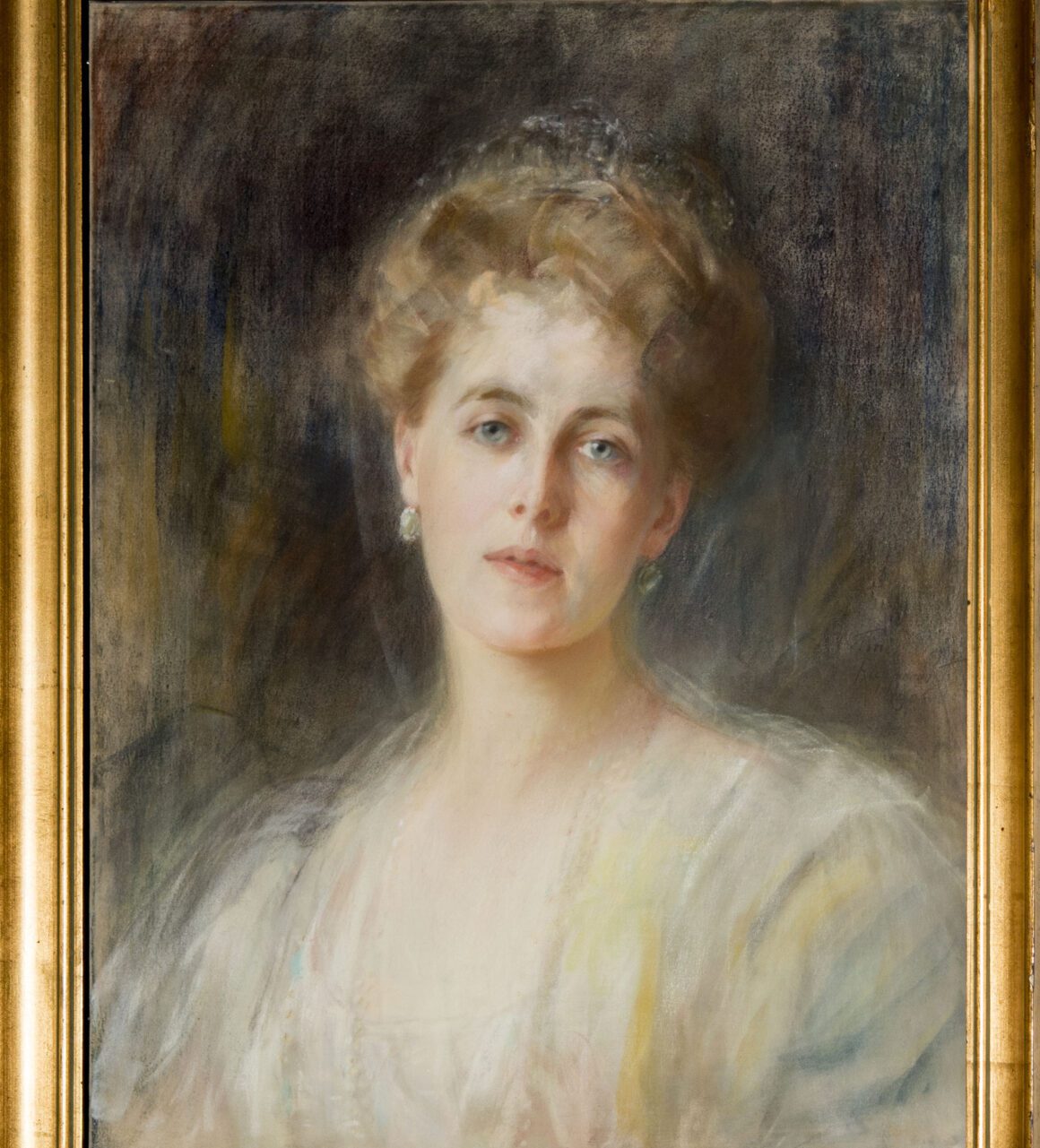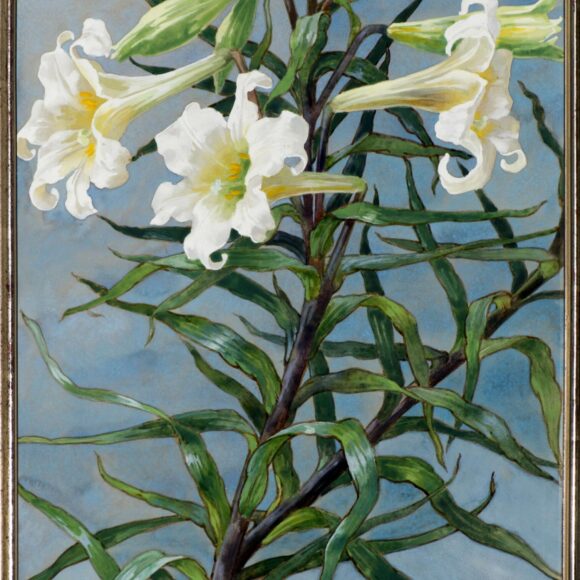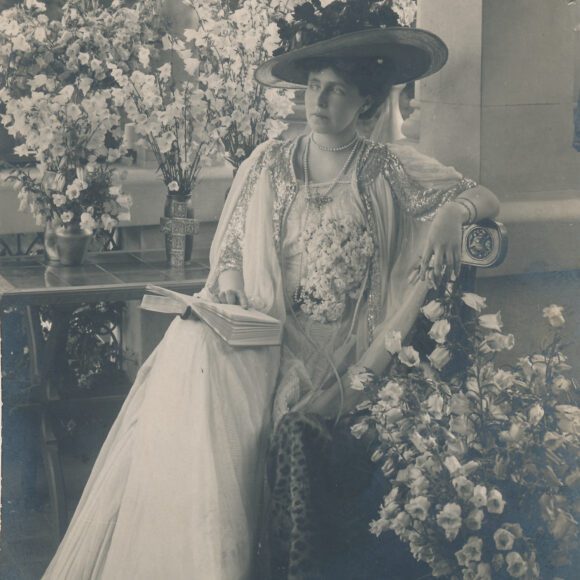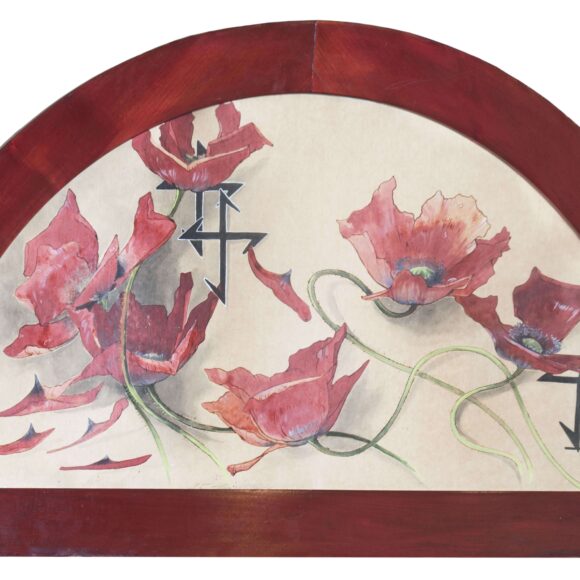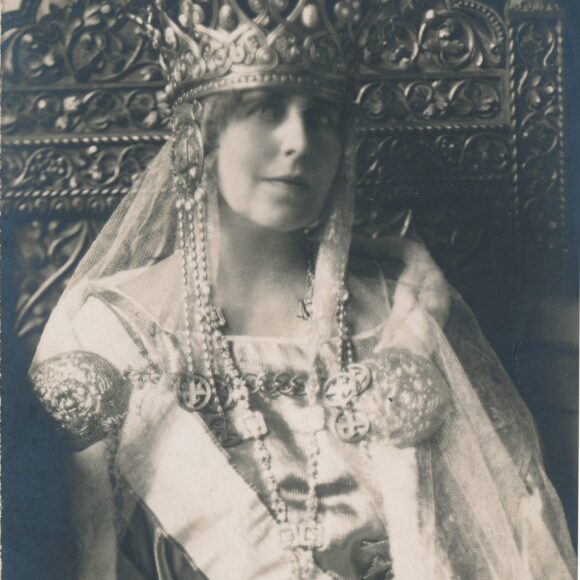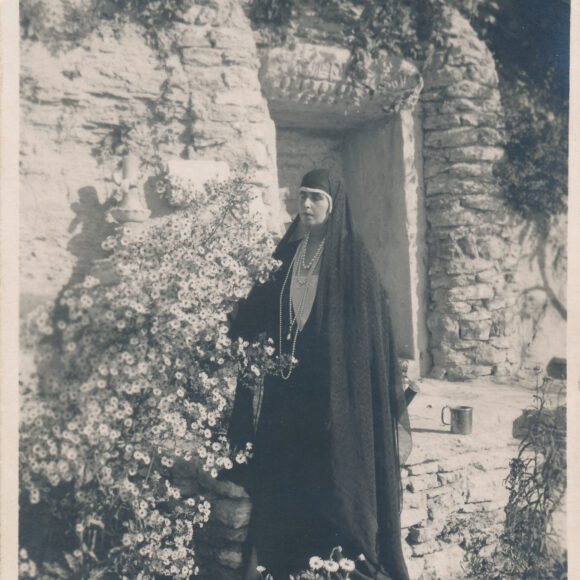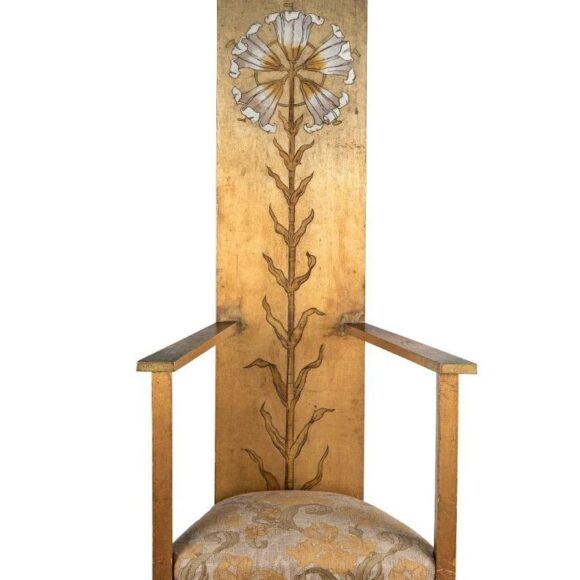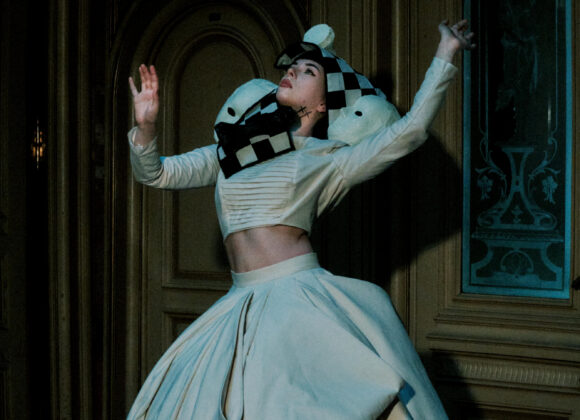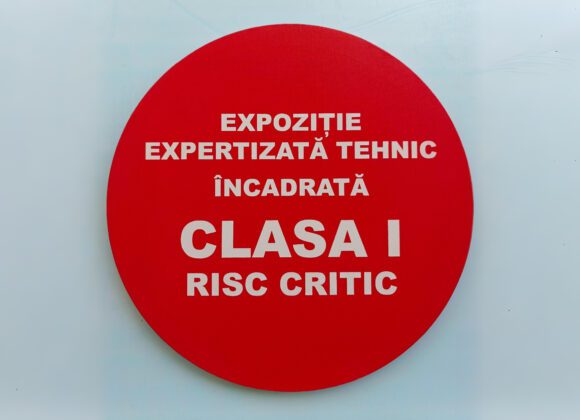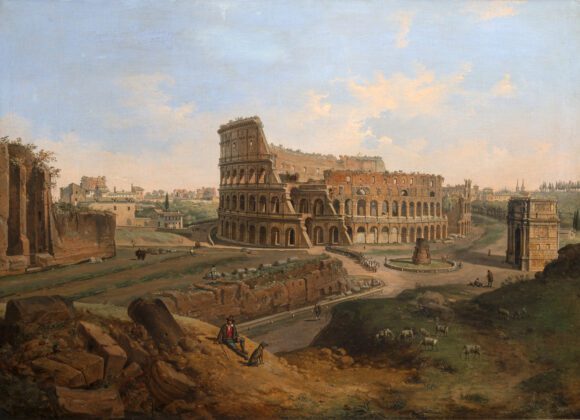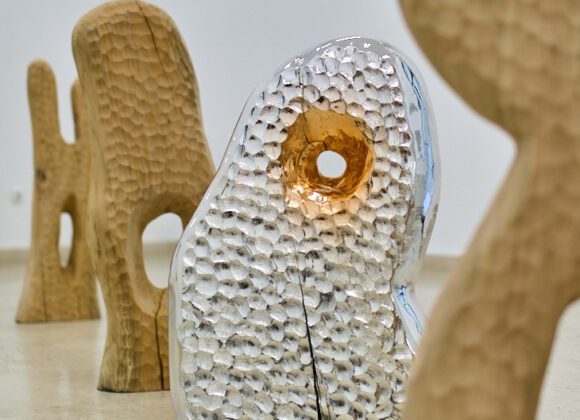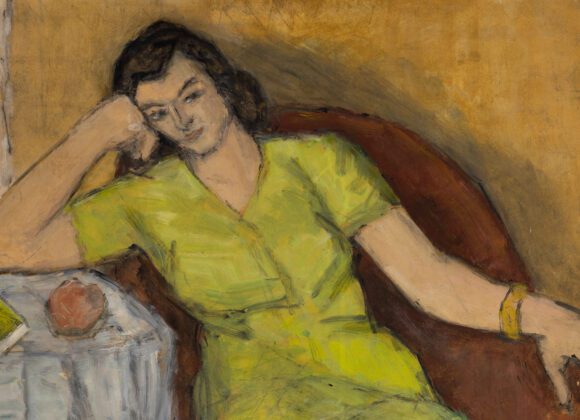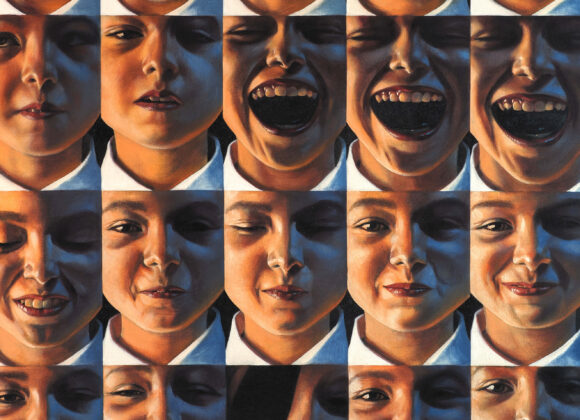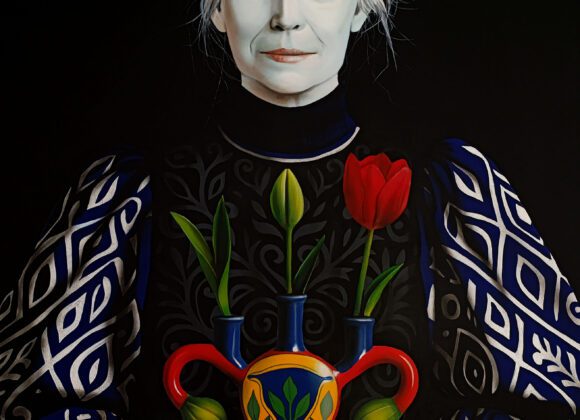Marie of Romania
Queen and Artist, alongside the "Women Painters and Sculptors"
Sept. 6 – Dec. 15

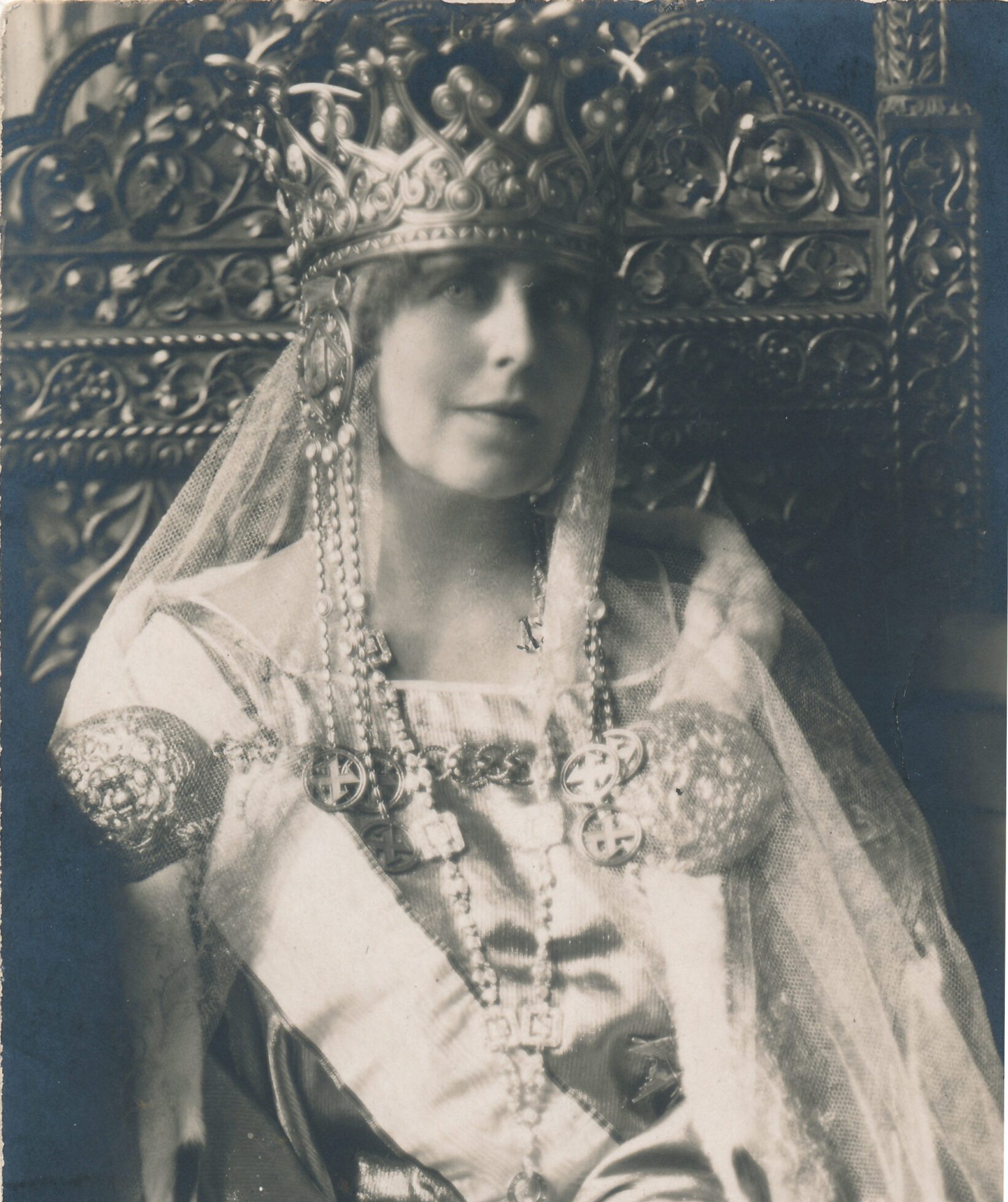
An emblematic figure of our monarchy, Marie of Romania has gone down in history not only for her heroic deeds during the Great War, but also for her artistic nature, which she manifested since her childhood and youth. Arriving in Romania at the age of 16, Princess Marie would later nurture a sincere and unwavering love for the country she would later rule.
Painting – a princely and royal passion
Ever since her youth, Princess Marie had shown an interest in painting and drawing, passions that were of great interest to the aristocracy and nobility at the time, and in royal families they had become – along with music – almost essential “subjects” for the education of the princely descendants. The scholastic model also applied to Queen Victoria’s granddaughter, who was a natural talent, as she confesses in Povestea vieții mele: “I had an inclination for only one art: painting. Of course, I also liked reading, but I was more content with a brush in my hand.”
The young Princess received the first excellent lessons, for six weeks, from her professor Ruth Mercier, “famous for painting flowers,” whose “watercolour technique was without equal”.
Having the decency not to consider herself a great artist, the Queen was nevertheless aware of her talent, the evidence of which is still preserved today in museums and private collections. “I never worked enough to become a real artist, but what I have created had a certain originality and vigour, as far as I could tell; the drawing was good and I had a definite gift for colour”. Although life didn’t give her the chance to study art seriously, Marie developed her talent “in a certain direction, leaning towards the decorative side”.
White Lilies – Queen Marie of Romania, Peleș National Museum
The Queen’s flowers and gardens
Passionate about gardens and flowers her entire life – “from my mother we all inherited our boundless love for flowers” –, the young Princess will paint flowers exclusively, in a manner specific to the Art Nouveau style, where the natural is harmoniously interwoven with the decorative. She painted alongside her sister, Victoria Melita, who was so often invited to Pelișor Castle in Sinaia, where she lived in an apartment on the second floor, just opposite the painting studio.
For an artist like Marie of Romania, the nature of her adopted country at the mouth of the Danube River gave her countless moments of joy, spent in the gardens and parks of the royal residences, to whose beautification she contributed to the full. She was joined in this love of nature by Prince Ferdinand, her husband, for whom botany was more than a passion. “Nando and I were very fond of flowers” – the Queen confessed in Povestea vieții mele.
“When I was with him among the flowers, Nando was once again the man I met at Coburg and Sigmaringen; in those moments he was younger, he knew how to laugh and how to have a good time, and no longer had that look of worry that used to pain me so. Ah, yes, how he loved flowers! That was a strong link between us, a bridge by which we could always reach each other, amid so many things that were still unclear to us.”
Postcard Princess Marie of Romania on the balcony of the Pelișor Castle.
Dated c. 1905-1907, Alfred Brand Sinaia photographic studio
Writing about Martha Bibescu, a friend from her youth who had a residence at Posada, near the royal one in Sinaia, Marie of Romania evoked the shared passions that the two talented aristocrats followed their entire lives: “We both loved gardening and flowers, we loved to plan strange and original dwellings, to collect ancient stones or to discover unexplored secret corners, old churches, deserted houses and so many other charming things for which others hardly have eyes.” (Povestea vieții mele, volume 2).
From the last artistic period of Princess Marie, the Peleș National Museum preserves a piece of exceptional value: the manuscript dedicated to her husband, Prince Ferdinand, which she made in 1906, at Pelișor Castle, consisting of 50 parchment sheets, on which flowers were painted, accompanied by love verses.
In the collections of the Peleș National Museum we find several watercolours signed by Princess Marie, depicting the lilies or poppies that she loved so much, water lilies and irises, along with the tulips she painted in 1902, at Cotroceni. Also preserved in the same Peleș collection were Queen Marie’s photographic albums, those dedicated to the children having the covers painted by her own hand.
Flowers were the setting in which Marie of Romania lived her whole life, at Cotroceni, Sinaia, Bran and Balchik, Scroviștea or Copăceni. In spring or early summer, the sovereign admired them in the Cotroceni garden, where “the flowers bloom one by one, according to the season: snowdrops, fumeworts, daffodils, bell flowers, tulips, irises, lilac, peonies, roses, lilies, while children run around happy, carefree, full of life. The fragrance of the willows and, later, of the linden trees fills the warm air, bees and butterflies of all colours fly everywhere”. All of the Queen’s “dream homes” had carefully tended gardens and were permanently enriched with all kinds of flowers.
Poppies, Queen Marie of Romania, early 20th century, Peleș National Museum
Taking part in the artistic life of the time
Princess Marie was also involved in the artistic life of Romania, becoming, in January 1902, at the invitation of the sculptor Oscar Späthe, Honorary President of the Young Artists society, founded on December 3rd, 1901, whose purpose was to be explained by the painter Constantin Artachino: “We were an institution that set the tone in art in its early days, created the atmosphere and stimulated the passion of those who loved beauty in order for them to become collectors. It promoted the art field and created a favourable social status for artists, who began to be appreciated for their noble profession.”
The beginning of the Princess’s long-lasting connection with the Young Artists group is recounted in her work, Povestea vieții mele: “From the start, my attention was drawn to the old Romanian art and the state of art in Romania, and shortly after my arrival in the country a group of young artists came to ask me to be their leader and to set up a society called ‘The Young’. We were the younger generation stepping forward, free from the principles of the old school, but we didn’t take excessive liberties. Luchian, Ștefan Popescu, Vermont, Verona, Kimon Loghi, Steriade, Satmari, Strâmbulescu, Artachino, Pătrașcu, Storck, Späthe and others were part of this new movement and, in that time of peace and prosperity, the opening of our annual salon was a celebration for all the select people, where beautiful speeches were made and we encouraged each other. Even I was bold enough to exhibit some of my watercolours, which were sold for the benefit of the society. This brought us close together.”
Eugeniu Buhman also noted the participation of the Princess in the Young Artists’ exhibitions: “After the Young Artists society was established under the patronage of the Princess, her original works, flowers and decorative motifs, were also presented at the annual exhibitions every spring, and they were displayed as beautifully as possible”. At the first exhibition of the Young Artists group, held from the 1st of March to the 1st of April 1902, in the Athenaeum Palace, and opened in the presence of Queen Elisabeth of Romania, Princess Marie participated with several watercolours (illustrating irises and water lilies) and pieces of furniture made according to her own design. A journalist even wrote that the Princess “paints flowers almost as well as the Good Lord”.
Postcard, Queen Marie Crowned, 1922
Dated October 15, 1922
Guggenberger-Mairovits photographic studio, Sibiu
Balchik and the Queen’s colony of artists
In the third decade of the last century, the Queen discovered Balchik, where she was guided by the painter Alexandru Satmari and where she would maintain a colony of artists around her, whose creations left a mark on Romanian contemporary art. In 1924, the Queen bought her first property in Balchik, and in just a few years, with passion and energy, she created a unique residence in the area.
Balchik will be the place where Marie of Romania will create the most beautiful garden of her residences, the spectacular nature of the Silver Coast – so well represented in the works of the interwar painters.
Later, towards the end of her life, Marie, Queen of Romania, was recognised for her artistic merits and for the patronage through which she protected and encouraged so many painters. In an open letter, dated December 8, 1937, the members of the Young Artists of the past – Iosif Iser, Ștefan Popescu, Nicolae Dărăscu, Jean Al. Steriadi, Gheorghe Petrașcu and Eustațiu Stoenescu – paid homage to the artist Queen: “Your Majesty, each one of us fondly recalls the young Princess of yesteryear, who presided over the beginnings of our art. […] Our pride will be that we have lived through these great times, that we have worked and formed ourselves under Your Majesty’s reign, that we are part of the great procession of Your Majesty’s life and reign.”
Postcard, Queen Marie in mourning clothes in the garden of Balcic Castle, dated 1927
Julietta Photographic Studio, Photographer of the Royal Court, Bucharest
Furniture design – another of the Queen’s talents
Made in the workshops of the School of Arts and Crafts in Sinaia, the pieces of furniture designed by Princess Marie – many of them carefully preserved in the collections of the Peleș National Museum – decorated the interiors of Pelișor Castle.
The most valuable pieces are part of the furnishings made in 1909 from gilded linden wood for the decoration of the interior of the Golden Bedroom and of its salon in Pelișor Castle. For the transfer of the decorative motifs, Princess Marie was assisted by architects Karel Liman and Jean Ernest.
At the exhibition of the Young Artists in March 1903, Princess Marie exhibited pieces of furniture that bear the stamp of her style and aroused the interest of contemporary artists and journalists. Adevărul newspaper made a special presentation of the creations of the “talented and highly skilled female artist”: “A sofa covered with a splendid bed covering, beautifully embroidered with violets by Mrs. Anna Roth, is at the back. Wardrobe, chairs, armchairs… woven with peacock feathers – an oasis of colours in which nature has put all her unsurpassed artistry and for which the Princess seems to have a particular admiration – complete the arrangement of this room, in which the chiaroscuro makes you dream of artistic class”.
Princess Marie became a great promoter of the Art Nouveau movement, acquiring decorative art pieces to adorn her residence in Sinaia. Pelișor Castle preserves sculptures and busts by Mary Alyce Thornycroft (representing Marie’s mother, Grand Duchess Maria Alexandrovna), by Oscar Späthe (The Byzantine Saint Woman, acquired by the Princess in 1904, or the bust Melancholy), by Fritz Storck (Eve or Temptation) or by Alexandru Călinescu.
Architecture and interior decoration naturally and harmoniously added to the Queen’s passion for landscaping. Beautiful in their simple exteriors, with white-painted walls, with salons visually extended into the parks enlivened by her majestic presence, Queen Marie’s residences – whether palaces, castles, houses or simple huts – all bear the stamp of her refined taste.
Lilly Chair, School of Arts and Crafts, Sinaia,
after Marie’s drawing, Peles Peleș National Museum
The passionate art collector
Another special side of the artist that was Marie of Romania was her art collecting – a passion that the Sovereign fulfilled all her life, bringing back to the country from her unforgettable travels around the world, for the adornment of her residences, decorative art objects that corresponded to her eclectic taste, believing that “it is a blessed talent to embellish everything, to make events and beings more attractive and to bring out the light more than the shadows”.
The love for photography
Another of Queen Marie’s passions was photography, which she practised since her youth, together with another enthusiast of the field – Prince Ferdinand of Romania, her husband. The Queen loved to take photographs and, above all, to be photographed in the splendid natural surroundings of her residences in the mountains, the plains and the sea, or in the interiors of her “dream homes”, which she spent a lifetime decorating. The Queen is aware of her beauty and feels obliged to preserve the memory of this beauty for generations to come, which led to the creation of a huge photographic archive held by the Peleș National Museum and the National Archives of Romania.
Music, theatre and film
Music, theater and film were the lifelong passions of Marie of Romania, who succeeded in instilling in her children a taste for artistic creations in these fields. George Enescu’s absolutely special relationship with Queen Elisabeth and Queen Marie hardly needs to be emphasized, a whole bibliography on the subject evoking the extraordinary relationship that the great composer had with the crowned heads of Romania.
Towards the end of his life, the musician would confess to his first biographer, Bernard Gavoty: “At that time, I had the honour and pleasure of going to the Royal Palace quite often. I still have on the salon wall a photograph that Princess Marie gave me in 1908 in Sinaia. The all too flattering dedication in English – ‘And he awakes the music of our souls’ – might give me cause for pride, because I look like a magician there.” (see Les souvenirs de Georges Enesco / Amintirile lui George Enescu, 2005).
The recitals given by George Enescu in the Great Concert Hall of Peleș Castle or at the Royal Palace in Bucharest, together with the poet-Queen Carmen Sylva and the cello player Dimitrie Dinicu, have remained in the memory of his contemporaries. The Queen also enjoyed opera and operetta performances, which she watched with interest at the Romanian Operetta in Bucharest.
Usually, the Sovereign preferred to organise classical music recitals at the residence on Cotroceni Hill, in the company of some special guests. On Sunday, November 25, 1928, Marie of Romania set up a “tea with guests, to listen to Enescu. Pinx [George Enescu] was in excellent form and he almost outdid himself. His violin sounded extraordinary in our great white salon. He closed with Parsifal at the piano. We turned out most of the lights and everyone was overwhelmed by the extraordinary beauty of his art.” (Marie, Queen of Romania, Însemnări zilnice, volume X, 2013).
The exhibition “Marie of Romania. Queen and Artist” is organized in partnership with the Peleș National Museum, the Brukenthal National Museum, the “Regina Maria” Municipal Museum Iași and the Cotroceni National Museum.
Exhibition design: Diana Nicolaie
Women Painters and Sculptors
In 1916, the Association of Women Painters and Sculptors was founded in Bucharest by the artists Cecilia Cuțescu-Storck, Olga Greceanu and Nina Arbore, and was supported by Marie of Romania. The exhibition presents works signed by great women artists of Romania: Marie, Queen of Romania, Cecilia Cuțescu-Storck, Olga Greceanu, Lucia Dem. Bălăcescu, Nadia Grossman-Bulighin, Mina Byck Wepper, Irina Codreanu, Georgeta Peters Holban, Celine Emilian, Elena Popea, Micaela Eleutheriade, Margareta Sterian, Ligia Macovei, Rodica Maniu (Mützner), Nina Arbore, Margareta Cossăceanu-Lavrillier, Maria Ciurdea Steurer, Merica Râmniceanu, Milița Petrașcu, Lucia Beller, Magdalena Rădulescu, Lola Schmierer Roth, Casilda Miracovici, Florența Pretorian, Maria Brateș-Pillat, Ecaterina Filionescu Murnu, Corina Lecca Pârvulescu, Letiția Lucasievici, Juliette Orășianu.
Section curated by Alexandra Ilniţchi-Ardelean
Exhibition design: Diana Nicolaie
More exhibitions

